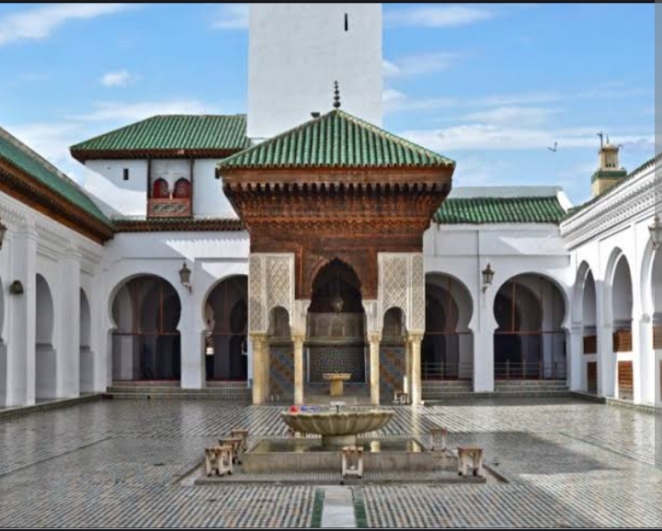The University of Al-Qarawiyyin, was founded in 859 CE by Fatima al-Fihri, a woman of boundless vision and unwavering faith, Al-Qarawiyyin holds the distinction of being the oldest continually operating university in the world. Its story is a tapestry woven with threads of scholarship, faith, and the relentless pursuit of enlightenment, echoing through centuries and leaving an indelible mark on the intellectual landscape of the Islamic world.
Driven by a deep commitment to learning and fueled by her inheritance, Fatima al-Fihri embarked on a remarkable endeavor. In 859 CE, she laid the foundation stone for what would become Al-Qarawiyyin, dedicating it to both religious and secular education. This bold act defied societal norms and established a sanctuary for intellectual exploration, welcoming students from across the Muslim world.
The early years of Al-Qarawiyyin were marked by explosive growth and intellectual vibrancy. Renowned scholars flocked to its halls, drawn by the promise of unparalleled learning. Luminaries like Ibn Rushd (Averroes), the renowned philosopher, and Maimonides, the esteemed physician and scholar, graced its classrooms, leaving behind a legacy of groundbreaking ideas in philosophy, science, and medicine.
The university’s vast library, a treasure trove of ancient texts and manuscripts, became a magnet for knowledge seekers. Within its walls, students delved into the Quran, Islamic law, logic, astronomy, and countless other subjects, fostering a vibrant atmosphere of intellectual exchange and innovation.
Al-Qarawiyyin continued to thrive for centuries, weathering political upheavals and social transformations. It remained a cornerstone of Moroccan education and religious life, shaping the minds and hearts of generations.
However, the arrival of European colonial powers in the 19th century cast a shadow on the university’s prominence. Its influence dimmed somewhat, yet its spirit remained unbroken.
With Moroccan independence in 1956, Al-Qarawiyyin embarked on a new chapter. Embracing the winds of change, it integrated into the national university system in 1963, shedding its purely religious focus and expanding its curriculum to encompass a wider range of disciplines, from humanities and social sciences to natural sciences.
A landmark moment arrived in the 1940s when the university finally opened its doors to women, ushering in a new era of inclusivity and progress.
Today, Al-Qarawiyyin stands tall as a beacon of academic excellence and cultural heritage. Its modern campus hums with the energy of students pursuing degrees in diverse fields, while the historic mosque, adorned with intricate tilework and breathtaking architecture, remains a place of worship and a living testament to the university’s rich past.
The legacy of Al-Qarawiyyin transcends geographical boundaries and temporal limitations. It serves as a powerful reminder of the transformative power of education, the unwavering pursuit of knowledge, and the enduring impact of a visionary woman who dared to dream of a world illuminated by learning. As its story continues to unfold, Al-Qarawiyyin promises to inspire future generations to embrace the pursuit of knowledge and contribute to the ongoing quest for understanding and enlightenment.

